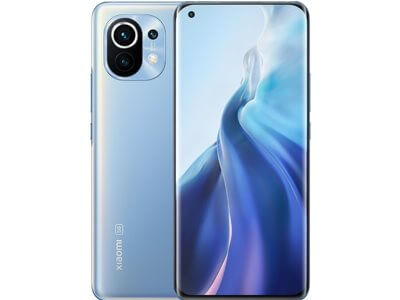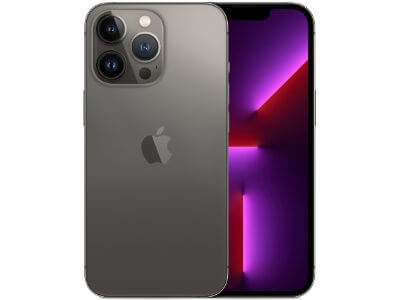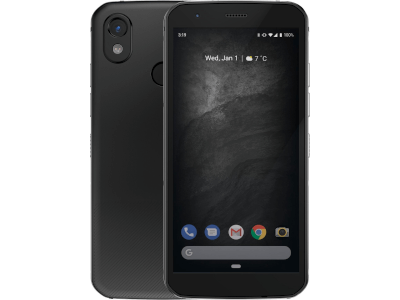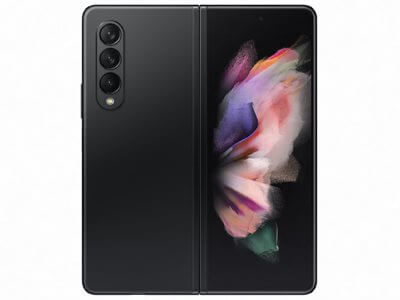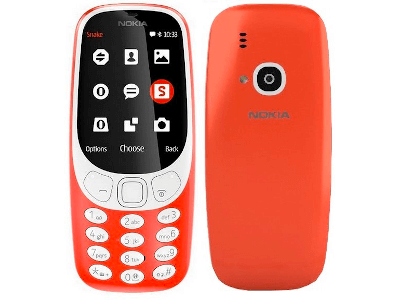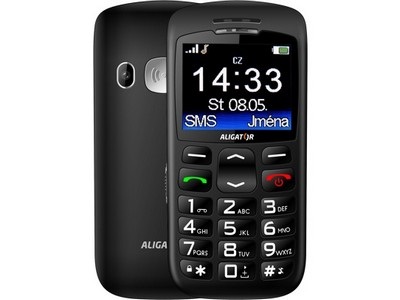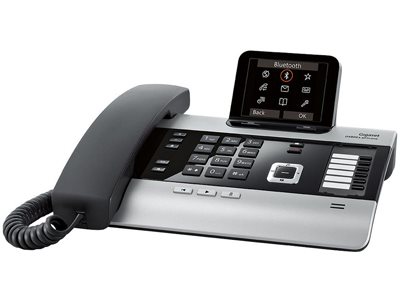How to Choose a Mobile Phone (2022)
Mobile phones have many different parameters and choosing the right one can be difficult. Whether you are a consummate professional looking for a device to organise your work, an ordinary user who needs an inexpensive smartphone for your everyday life, a photography fan seeking the best shots possible, or just looking to buy a new phone for your grandmother, we will help you choose according to the right features. In this article, we are going to introduce you to different categories of mobile phones, important parameters and frequently asked questions. We will also discuss features such as photomodule, 5G, and eSIM.

Several tips for choosing a mobile phone
-
Decide if you want a smartphone or a classic keypad phone
-
With a large diagonal, you can enjoy multimedia, games and internet browsing, but large phones are harder to control with one hand
-
Choose a camera phone if you want to take beautiful photographs
-
Choose a rugged model to protect your mobile phone in every weather
-
Mobile phones for seniors feature large buttons and a large, easily readable screen
Mobile phone guide contents
- Smartphones
- Basic smartphone parameters
- What phone do I need if I'm a...
- Android smartphones
- Apple iPhone
- Camera phones
- Rugged phones
- Foldable phones
- Classic (keypad) phones
- Mobile phones for the elderly
Smartphones
Smartphones offer a large, yet reasonably sized touchscreen. They run on the iOS or Android operating system (each comes with its own pre-installed apps) and give you the option to install a wide range of apps and games by downloading them either from App Store or Google Play. The apps provide smartphones a virtually unlimited amount of functions. They can be used to play games, save notes, edit photos, handle all kinds of work-related matters or even manage money through banking apps.
Smartphone parameters
Display
When choosing a phone, one of the first steps is to choose the size of the display, and mobile phone screen sizes are constantly increasing over time. Hand in hand with this, mobile phone dimensions are also growing, but not as significantly as it might seem, because manufacturers are releasing phones with thinner bezels. The term frameless phones has been used for such devices. A larger display is placed in the same body, which is practical and at the same time looks great.
Today, the screen aspect ratio of 18:9 (or 19 : 9, 20 : 9, etc.) is common, replacing the obsolete 16:9. These elegant, long phones are easier to hold in one hand and beautifully display various visual content, while keeping the same width.
A common design element is a display notch. In each phone, it has a different shape or location. From a functional point of view, it doesn't matter if it is in the middle or on the side. They generally contain hidden selfie cameras or sensors for unlocking the phone with your face, though manufacturers would prefer to get rid of notches completely so that nothing “disturbs“ the clean look of the display. That's why they are already experimenting with cameras located behind the display layer of the screen. It will take a while before this technology reaches the mainstream market, however.
Smartphone display sizes
A larger diagonal does not always mean a larger device. Many phones have reduced frame sizes to a minimum, so a larger display can fit into a body of almost the same size. The following illustration shows two smartphones of similar height. See how the thin frame enables the phone on the right to boast a much larger display.
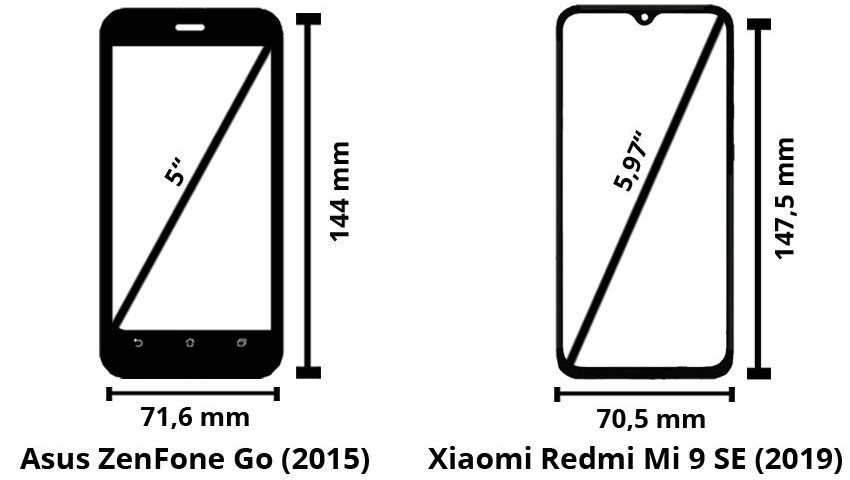
You can also check the following tables.
Examples of phones with large frames:
| Telephone | Diagonal | Display size to body ratio | Dimensions | Year of release |
|---|---|---|---|---|
| iPhone 8 | 4.7" | 65.4% | 138.4 × 67.3 × 7.3mm | 2017 |
| Sony Xperia Z3 | 5.2" | 70.9% | 146 × 72 × 7.3mm | 2014 |
| iPhone 8 Plus | 5.5" | 67.4% | 158.4 × 78.1 × 7.5mm | 2017 |
Examples of thin-frame phones:
| Telephone | Diagonal | Display size to body ratio | Dimensions | Year of release |
|---|---|---|---|---|
|
Samsung Galaxy S22 Ultra 5G
|
6.8" | 90.2% | 163.3 × 77.9 × 8.9mm | 2022 |
|
Xiaomi 12 Pro
|
6.73" | 90.2% | 163.6 × 74.6 × 8.2mm | 2022 |
|
OnePlus 10 Pro
|
6.7" | 90% | 163 × 73.9 × 8.6mm | 2022 |
|
Realme 9 Pro
|
6.6" | 84.4% | 164.3 × 75.6 × 8.5mm | 2022 |
| iPhone 13 Pro Max | 6.7" | 87.4% | 160.8 × 78.1 × 7.65mm | 2021 |
So, when you see a large display diagonal, it does not necessarily mean that you are buying a great big brick of a phone. Check out the dimensions of the entire device first.
Screen technology
OLED screens are the best on the market. They are divided into two categories based on the matrices used.
LCD screens generally have a higher power consumption than OLED screens. However, their design is much cheaper, and therefore we see LCD screens in cheaper models.
Display aspect ratio
There are several aspect ratios. There are no real limitats and manufacturers like to experiment. In most cases, however, you will encounter:
Most common resolutions
| Screen resolution | Screen resolution size |
|---|---|
| HD | 1280×720p |
| Full HD | 1920×1080p |
| WQHD | 2560×1440p |
| 4K | 3840×2160p |
The higher the resolution, the sharper the picture. The cheapest phones with smaller diagonals have HD resolutions. Full HD is the mid-range standard while high-end phones have finer resolutions. At the moment, 4K resolution is just an experiment on a few models. There are also other resolution values beyond those listed in the table.
Pixel Density
Display resolution is not everything. A 4K smartphone can still look more blurry than another smartphone with only Full HD. The difference here lies in the pixel density of the display - this depends on not only the resolution but also the size of the screen and the selected technology and processing. It is given in ppi (pixels per inch) and usually means that the higher the value, the sharper the image. For phones, this value averages around 350-400 ppi.
Display frequency
In recent months, one computer trend has been introduced to smartphones. We are talking about an increased refresh rate. The refresh rate is a value that indicates how many times per second the phone display is able to display new information. Until recently, the classic 60Hz panels were used (that's why the videos are mostly in 60 FPS, the displays could not handle more anyway).
Today, however, we encounter much higher values. Mid-range phones also have a 90Hz panel, while the top models reach up to 120 or even 144 Hz. You'll appreciate increased refresh rates everywhere, from simply browsing the interface to playing games or surfing the Internet. Initially, their problem was increased consumption, but today manufacturers are using adaptive refresh rates. Depending on the situation, it can vary from 1 Hz up to the maximum value to save energy.
Flexible display
Flexible displays are becoming an increasingly hot topic. Many manufacturers are starting to include this technology and each of them handles it a little differently. For example, the flexible Samsung Galaxy Z Fold2 5G bets on its book-style opening, while the Samsung Galaxy Z Flip and Motorola Razr are modern clamshells. Xiaomi released a bizarre prototype called the Mi Mix Alpha, which is literally all display. However, it is not available to the general public.
Operating memory RAM
Every smartphone has its own memory. When choosing a phone, it is one of the most important parameters to consider. The larger the memory size, the faster and easier will it be to handle more operations at a time.
How many GB of memory do I need?
Processor
Processor cores
The most important part of the processor that is responsible for all computational operations. In smartphones, the number of cores usually ranges from 4 to 8, the more cores the better. Multiple cores work better between each other to shorten the processing time.
Processor frequency (clock)
Frequency indicates the number of instructions the processor can perform in 1 second. It is indicated in GHz. Higher frequencies increase CPU performance. Common frequency values range from 1.6GHz to 2GHz.
Processor model specification
This is the only indication that can help you predict the performance of your phone after searching for reviews and benchmarks. For example, a modern quad-core chip may be more powerful than an outdated eight-core.
Artificial Intelligence
With the latest high-end models, you may come across phones with artificial intelligence features. What is it all about? Maybe the phone's processor has a processing unit or an extra piece of code that makes it easy to take photos or save battery power. You can also experience artificial intelligence with virtual assistants like Google Assistant (Google), Alexa (Amazon), Siri (Apple), Bixby (Samsung), and so on. Smart algorithms are discussed in detail in AI - Artificial Intelligence (EVERYTHING YOU NEED TO KNOW).
Best-known manufacturers
Qualcomm
Their processors and graphics accelerators are particularly praised for their multitasking capability and gaming performance. The company has been manufacturing processors since 2005 and has gone through a long history of mobile engineering. Their Snapdragon processors are also used on flagships of the largest manufacturers, such as Google Pixel, Xiaomi Mi, or some of the Samsung Galaxy S model variants.
Apple
Apple keeps its processors in check and bets on smooth cooperation with the software.
Samsung
The Korean electronics company has kept up with the competition and makes the processors that are used in their flagship mobile phones. It often mixes them with Qualcomm's processors, depending on the market the phone is made for.
MediaTek
The Taiwanese processor maker MediaTek is one of Qualcomm's main competitors. In its portfolio, it has everything through low-cost processors, mid-range chips, futuristic X-series - which reaches up to 3GHz. It boasts plenty of original features such as the patented MiraVision. These processors are very popular with Chinese manufacturers - most notably Xiaomi and Meizu.
HiSilicon
A Chinese company owned by Huawei. It is the largest printed circuit manufacturer on the Chinese market and has a great background for the development of new technologies. Unlike other Asian manufacturers, it does not increase performance by the number of computational cores but improves the core itself.
nVidia
A well-known graphics card player started manufacturing mobile processors a few years ago and is certainly not behind the competition. nVidia processors excel primarily due to their performance in games. The state-of-the-art Tegra X1 is a quad-core chipset with a 256-pixel graphics unit and is therefore used in the Nvidia SHIELD Android TV portable game console.
Battery
Battery life is measured in mAh (milliamp hours). The higher the number, the greater the capacity. The standard battery capacity for an entire day's battery life is approximately 4,500mAh. Values of 5,000mAh or more can be considered as an above-average battery that will provide good battery life from a single charge.
However, you should consider other factors that may affect the rate of discharge, such as display size, processor performance, and the use of data functions. To make battery life comparisons between phones as objective as possible, a laboratory-tested stand-by time is given. This is the maximum amount of time that a phone can last from a single battery charge when it is on but not in active use.
Many phones support fast charging, which means nothing more than charging the phone quickly. We can consider a value of 15 W and more as fast charging, but some mobile phones also offer 65W charging. It can charge the battery in a few dozens of minutes.
With more expensive phones, you may encounter wireless charging. This comes in handy if you don't want to constantly look for cables to plug in or you want to use a dock to simultaneously charge your smartphone and smartwatch. Nowadays, several brands support wireless charging and more and more are following suit. Wireless power banks, such as Samsung Wireless Battery Packs work on the same principle as classic docks and are growing in popularity. Read more about Wireless Charging.
Another feature that has recently emerged is reverse charging. This is a cool feature found on some phones that support conventional wireless charging. Reverse charging turns your phone into a wireless charger. You can recharge a friend's battery on the go or recharge smart accessories. Reverse charging is currently supported by the Samsung Galaxy S21 5G (and also the S21 Ultra and S21+) or the Xiaomi Mi 11.
Camera
An important factor in choosing a mobile device is the camera. The best ones support high dynamic range, shoot well in the dark and can optically zoom in on distant objects.
Rear/front camera
Every smartphone and keypad phone comes with a rear camera, whether standard, dual, triple, etc. The rear camera almost always has a higher resolution, aperture and a wider lens for nature and scenic photos. The front camera, which is often dual, is used for selfies.
Multiple-lens camera
Nowadays, every modern smartphone has multiple cameras. In addition to the main rear camera, you will usually find one or more of the following:
Resolution
This is the number of pixels that the resulting photo will contain. It's not a sole factor that should determine the quality of the camera because the quality is primarily determined by the size of the sensor chip, and there is almost no difference between 14-28Mpx. Even some of the best manufacturers use lower resolution cameras – as seen in the iPhone 13 Pro (12 + 12 + 12 Mpx). The Samsung Galaxy S22 Ultra 5G on the other hand, uses a 108Mpx sensor.
Higher resolution is ideal for large image sizes, but the size of the sensor will be limited and the image quality will be lower in comparison to SLR cameras.
Luminance and aperture
The main camera parameter is not only megapixel (Mpx), but also the aperture. This is indicated by the letter "f". The number behind it indicates the loss of light when passing through the lens. The lower the number, the better the device can handle a lack of light, which is necessary in order to achieve sharp shots, not only in dim light. Greater luminosity can also create beautifully blurred backgrounds that we all love so much. The regular smartphone aperture size is around f/1.8 to f/2.4. The best devices offer f/1.5.
Video
Mobile phone cameras can also record high-definition videos, often with different features, such as slow-motion or a time lapse video. All phones record in Full HD resolution, with the more high-end models handling even 4K or 8K.
For video, an important parameter is the number of frames per second (fps). Typical values are 30 or 60 frames. If your phone handles Full HD video at 60 frames per second, the video will be smoother than Full HD at 30 frames per second. Slow-motion modes are a special case. They are able to capture video at very high frames (eg and 240 FPS).
HDR and scene modes
Because mobile cameras work more automatically than manually, they have lots of different modes for every occasion.
HDR is a feature that has always been used in photography and now finds its place in digital photography. It is a combination of photographs of various exposures used to produce a high-contrast image.
Panorama mode allows you to take very wide photos, such as the entire view from a lookout tower.
Portrait mode is for taking pictures of people. It uses the smallest aperture and blurs the background.
Macro mode is used when shooting small objects, such as flowers or insects.
Stabilisation
As you rarely use a tripod when taking photos with a mobile phone, image stabilisation is an integral part of each camera. It is divided into two categories - Electronic (EIS) and Optical (OIS). Cheaper models have electronic stability that only increases the ISO sensitivity to achieve a shorter shutter speed. The quality of resulting photos would sometimes be better if EIS was not applied at all. OIS, on the other hand, provides much better results, as it is built into the camera.Some phones use both technologies together, creating hybrid stabilisation .
Autofocus
Any decent camera should support autofocus. Better phones accelerate focusing at short distances using laser and arbitrary phase shift detection (PDAF). The best devices use a combination of both methods. For iPhone, the PDAF variation is called Focus Pixels.
ToF technology
ToF (Time-of-Flight) technologies, or sensors based on it, are very common in the latest phones. These are advanced depth sensors that measure the distance between themselves and objects in its field of view using light beams or ultrasound. They operate with a maximum error rate of just 1%, while conventional dual cameras have an error rate of up to 10%. This makes the ToF sensor more precise for creating a bokeh or focus effect. You can read more about Time-of-Flight sensors in this article.
Connectivity and sensors
Connectivity
Nowadays, no smartphone should be without LTE high-speed Internet support. However, you should be aware that some devices that support LTE do not understand Czech frequencies. Most of the local LTE network is built at a frequency of 800 MHz. In our technical parameters, you can usually find out whether the given device supports “Czech” LTE or not.
The construction of 5G-based networks has begun worldwide, but is not yet a widespread standard for mobile networks. In the Czech Republic, 5G networks are only seen in specially designated test areas. In a few years, however, 5G could already become the norm, providing high data rates in towns, villages and remote parts of the country.
Connecting to the Global Positioning System allows you to track your position on maps anywhere on Earth with an accuracy of several meters.
Internet connection via WiFi wireless technology.
Provides wireless communication between your phone and other devices, such as wireless speakers and headphones. The higher the series, the higher the connection speed and the lower the power consumption.
NFC is a way of communication between two electronic devices. It serves for both data and information transmission. It is referred to as a technology of the future and is now commonly used for mobile payments. In Europe, we use Google Pay, Apple Pay and many more. With NFC, you can pay with your phone just like you would with a contactless credit card.
Used to transmit data using infrared radiation. Today it is not used too much as it is being replaced by Bluetooth and NFC. However, it still finds its use with a variety of electronics, such as televisions, air conditioners, home music players, etc.
Sockets designed for a data cable connection. The data cable is used to charge or connect the phone to the computer.
USB-C - a modern version of USB. Most new smartphones have it.
Lightning - connector exclusive for iPhones.
Micro USB - still the most common connector for cheap Android phones. However, it looks like they are on their way out as this connector is slow and unsymmetrical.
Do you plan to connect additional peripherals to your mobile phone? Then you will appreciate the presence of the USB OTG (On-The-Go) standard, which will further expand the connectivity of your phone. With the help of a special USB-C/Micro USB to classic “large” USB connection, you can connect external flash drives, hard drives (which may need additional power from a USB hub or an SD card reader. In certain situations, an Ethernet port or a wired keyboard or mouse may come in handy.
Sensors
An atmospheric pressure meter. A very useful gadget for smartphones.
If you do not enjoy adjusting the screen brightness, the light sensor will do it for you.
They monitor the movement and position of the phone. They are particularly used in the gaming industry, but can also have uses in everyday life, such as a mobile spirit level.
It is used to determine cardinal points by the Earth's magnetic field.
A very important sensor for every smartphone. When the phone is too close to your face during a call, the screen locks to prevent you from ending your call in error.
Internal storage and memory cards
It is important, especially when buying phones without a memory card slot, to be careful and choose an option with a slightly larger memory. Bear in mind that the phone's operating system memory size is not included. So, if you buy a device with 16GB of memory, take into account that the average operating system occupies approximately 4-5GB of free space, leaving you just 11-12GB for your data. Since each manufacturer pre-installs different apps in their phones and uses their own graphical superstructures, the available storage for Android phones may vary between models and manufacturers.
The following memory size variants are offered on the market:
Tip: If your phone has low storage, you can help by removing all your backed up photos (e.g. in Google Photos) from your phone. You won't lose them, they'll always be available online, but they won't take up space on your mobile.
Materials
The material used to make your phone plays an important role in its appearance, durability and price.
Useful features
Fingerprint reader and facial recognition
If you're worried about your private information and files on your mobile phone, these features provide solid security. The standard location of a fingerprint reader is either on the back of the device, at the front, below the display, or directly integrated into the display.
AI Assistant
A handy feature built into any operating system. It can find the nearest restaurant for you or dial the contact you specify. The AI assistant in iOS is called Siri, while Google named its own Google Assistant.
Notification LED
Customise your phone's LED notification colours. Definitely a useful feature for a smartphone! However, new phones use it less and less and you are unlikely to find it on a 2020 smartphone.
FM Radio
Most phones can use your headphones as a radio signal receiver, so you can tune in to your favourite station even when you are without an Internet connection.
Dual SIM
Telephones with the ability to use two SIM cards at one time are called Dual SIM. On one card you can have a voice tariff and a data card on the other, or you can use the services of two operators at the same time. A large number of phones allows the use of data services in only one of the SIM card slots. Dual SIM mobile phones are manufactured in both keypad and touch-screen versions.
eSIM
Thanks to eSIM (embedded SIM), you no longer need to own a physical SIM card and insert it into your phone. You won't have to ensure you choose a SIM, micro SIM or nano-SIM. The built-in chip in the phone, which replaces a conventional SIM card, allows you to enable any phone number by simply playing the eSIM profile over the data network of your operator. However, in the case of multiple eSIM profiles, only one of them can be used (for the time being).
Increased resistance
You can subject phones with increased resistance to some moisture or dust without damaging them. The level of resistance is usually indicated by the degree of protection, e.g. IP67 or IP68. The first number (6) indicates resistance to dust penetration and the second (here 7 or 8) to water. You can immerse an IP67 phone in water for half an hour at depths up to one metre without causing it harm. Rain won't damage it either. The crash resistance required for outdoor and sports activities is judged best by the rubber bumpers on the body of the phone.
Desktop mode
If you work with your mobile phone frequently on the go, have a monitor and require a portable PC-like workstation, you will love desktop mode. Selected phones, especially from the higher series with sufficient performance, have the ability to connect to your monitor, keyboard, mouse and other peripherals using a special hub. This gives you some desktop computer functionality that uses the power of your mobile phone. Examples include the Samsung DeX Station on their flagship S and Note series, and Desktop Mode on Huawei Mate models.
Google Services
The question of Google services has only recently become relevant for Android smartphones, due to the conflict between the USA and China. Huawei has been banned from using Google services on its phones. So the new Huawei phones with new processors must be equipped with their own services. Currently, there are two options for Android phones:
What phone do I need if I'm a...
Basic mobile phones categories
Smartphones are equipped with a wide touchscreen that is ideal for watching videos, playing games, reading books and emails, and, of course, browsing the internet. Modern smartphones also include a camera, and the best models produce images with the same quality as a conventional compact camera.
Smartphone operating system
The countless passionate debates on the internet prove that every user defines the "best" operating system a bit differently. If you are still unsure about which OS to choose, we have prepared a comprehensive guide to operating systems for you.
Smartphones by price
Premium smartphones

These phones boast the best parameters. You won't find plastic phones in this price category as high-quality materials, such as metal and glass are standard. Compared to cheaper models, no compromise is made. You will get an ultimate camera, a perfect display, an extremely powerful processor and more than enough RAM.
If you want the best in the market today, choose a premium phone and you can be sure that your new phone will be able to keep up with the newer models that will be inevitably released over the forthcoming years.
Advantages and disadvantages
- Top-class performance
- Premium display and camera
- High-quality construction
- Updates are available for longer
- Higher price
Upper mid-range smartphones
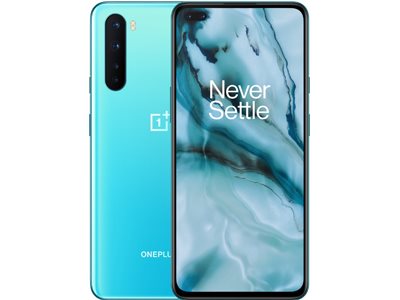
Smartphones in this range are on the border between a regular smartphone and a premium model. A high-quality design that often matches the best phones on the market is very common. The reason these models are cheaper than premium phones is mainly due to a worse-quality camera, a weaker processor, a smaller but fully sufficient memory capacity and a display that does not quite reach the highest quality. However, flagships from the previous year are often included in this price category.
If you want a perfectly crafted and sufficiently powerful phone with a quality camera but price is an important factor, you should find something in this category.
Advantages and disadvantages
- High-quality design
- Sufficient performance
- A decent camera and display
- Good price/performance ratio
- Some compromises compared to premium models
Mid-range smartphones
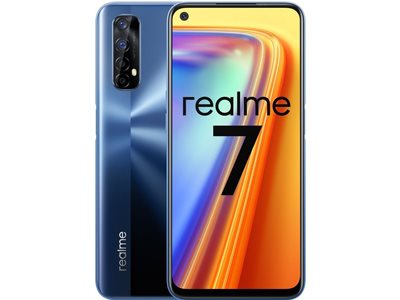
For many users, the middle class of smartphones represents the phones with the perfect price/performance ratio. Some, usually more expensive, models from this price category come with a metallic construction, a nice Full HD display and sufficient performance for everyday use. Compared to more expensive smartphones, mid-range smartphones usually have weaker cameras. You should also bear in mind that their performance may be insufficient in a few years and that manufacturers do not always provide several years of support for these models.
Mid-range phones are often the first choice of new smartphone users. They offer good quality and performance at a relatively low price. However, you will be making a compromise on performance, design, camera quality and the availability of updates.
Advantages and disadvantages
- Price
- Sufficient performance for normal use
- Relatively good display
- Update availability in the future
- Lower performance for demanding applications and games
- Worse camera
Budget smartphones
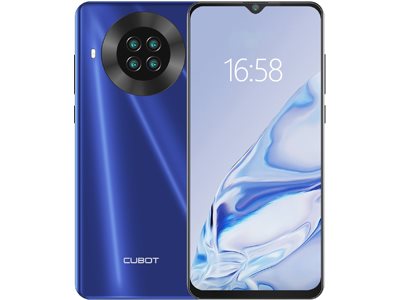
The cheapest smartphones offer features known from the premium models, yet at a considerably lower price. They work on the same operating system and they offer the same applications and games. Cheap phones, however, do not achieve the same performance as expensive models, thus your apps and system will probably not run as smoothly. The low price is also reflected by the poor-quality camera, a lower-quality design, a lower screen resolution and worse colour rendering.
A cheaper smartphone can be ideal as a second phone, for example for business calls, for children, or for journeys where there is a risk of loss or damage.
Advantages and disadvantages
- Low price
- Similar features to more expensive models
- Low power
- Poor camera
- Lower resolution display
- Reduced availability of updates
- Poor construction quality
Android smartphones are suitable for almost all regular users. Google's Android operating system provides users with greater customisation and personalisation options. Android phones also have the widest range of apps and games. You can find smartphones with an Android operating system in all price categories and in many different sizes and designs. Due to their simplicity and the wide range of models, almost everyone can find an Android phone that they can afford and enjoy.
Apple products boast high-quality workmanship and fine-tuned software. The Apple iPhone adds one of the best mobile cameras, a high-quality display and an intuitive iOS operating system. Like all Apple devices, it is ideal for use with other products within the Apple ecosystem. The iPhone is a phone that has always been one of the best you can buy.
Which iPhone to choose?
iPhone 14
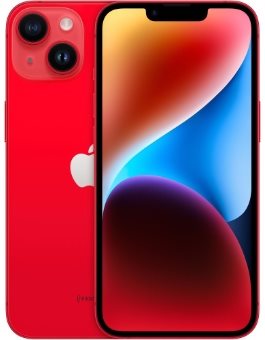
The recently revealed iPhone 14 is the smallest iPhone model of the new generation. The device boasts a 6.1-inch display and the A15 Bionic processor with a slight performance boost over last year's version. Battery life has been extended, and the iPhone can now sense a sudden change in G-force measurements and sound to detect a car crash and call emergency services. The iPhone 14 also has better low-light camera performance and improved video stabilisation. In short, there are several tweaks compared to the regular iPhone 13, including a new purple colour variant.
If you're looking for a high-quality camera phone with an ultra-wide-angle sensor and you're more concerned about battery life than having a huge display, iPhone 14 is the best iPhone for you.
Advantages and disadvantages
- Powerful A15 Bionic chip
- Gorgeous display
- Car crash detection
- 5 colour variants
- Improved battery life
- No 120Hz display
iPhone 14 Plus

After several years, we finally have another iPhone Plus. iPhone 14 Plus brings a larger display compared to the base model, measuring a whopping 6.7"— something that has been only been available with Pro Max models until now. iPhone 14 Plus also promises longer battery life thanks to a bigger battery and energy-efficient components.
The choice here is easy — if you like iPhone 14 but want a bigger display, go with 14 Plus.
Advantages and disadvantages
- Powerful A15 Bionic chip
- Large 6.7" display
- Car crash detection
- 5 colour variants
- Longest battery life of any iPhone
- No 120Hz display
iPhone 14 Pro
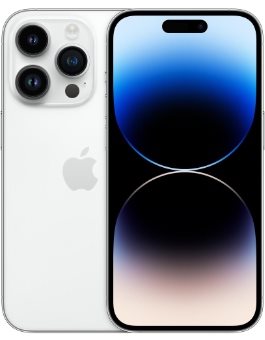
While the changes to the base iPhone 14 and 14 Plus models are primarily internal, the Pro models have also changed visually. The new iPhone 14 Pro is easily recognisable thanks to a new display notch that Apple has dubbed Dynamic Island. This pill-shaped notch doubles as a hub for alerts and notifications, you can tap it to switch to an app running in the background, and more. Plus, for the first time, the display gets an Always-on mode, so it displays the information you choose all the time. Performance has also been boosted further with the A16 Bionic chip and the camera resolution has been quadrupled to 48Mpx.
Users with more stringent demands and those interested in smartphone photography should consider getting iPhone 14 Pro due to its higher specs and the more powerful processor. The new notch also brings interesting innovations into the ways we interact with content.
Advantages and disadvantages
- Powerful A16 Bionic chip
- Novel interaction via Dynamic Island
- Brighter Always-on display
- 48Mpx camera
- Best features of any iPhone
- Price
- Only 128GB of basic storage
iPhone 14 Pro Max

As with the difference between iPhone 14 and 14 Plus, iPhone 14 Pro Max differs from the previous model only in terms of display size, resolution and battery capacity. You can get iPhone 14 Pro Max in black, gold, silver or purple, all with a stainless steel frame.
If you want the best camera iPhone and the biggest display possible, the choice is clear. iPhone 14 Pro Max is an unrivalled pick if you're willing to spend a really hefty sum on a phone.
Advantages and disadvantages
- Powerful A16 Bionic chip
- Novel interaction via Dynamic Island
- Brighter Always-on display
- 48Mpx camera
- Longer battery life
- Best features of any iPhone
- Price
- Only 128GB of basic storage
iPhone 13 mini
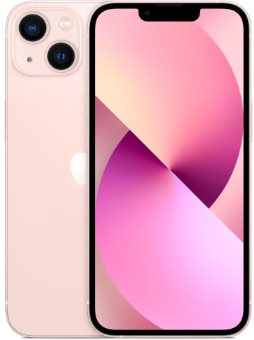
The last iPhone generation with a compact 5.4" screen size option. Looks can be deceiving, however, because just like its iPhone 12 mini predecessor, it can match the performance of the best iPhones around. The differences lie elsewhere. Although it features only two rear cameras, optical stabilisation with sensor shift has made its way to this model as well. You can also enjoy Cinematic mode that will give your videos a true Hollywood blockbuster feel.
Do you want uncompromising performance and a high-end camera in a small package? The new iPhone 13 mini is the right phone for you.
Advantages and disadvantages
- Powerful A15 Bionic chip
- High-quality optical stabilisation
- Cinematic mode
- 5 colours
- Longer battery life
- No 120Hz display
iPhone 13
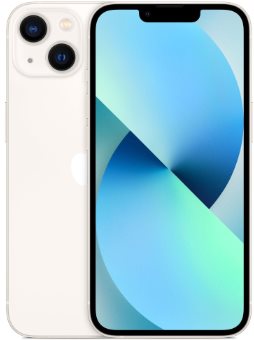
iPhone 13 is basically the same device as iPhone 13 mini mentioned above. Inside, it's powered by the A15 Bionic chip with 5G support. Storage options start at 128 GB, which is a very decent baseline and will be enough for many users.
Those who like the parameters of iPhone 13 mini but find the screen size a tad too small will appreciate the larger screen of iPhone 13.
Advantages and disadvantages
- Powerful A15 Bionic chip
- High-quality optical stabilisation
- Cinematic mode
- Longer battery life
- Basic capacity 128 GB
- No 120Hz display
iPhone 13 Pro

With iPhone 13 Pro, things really get serious. There are specific features in iPhone 13 Pro that justify the higher price tag. The 6.1" display is smooth as butter thanks to its 120Hz refresh rate. It is also dynamic, so if it's not needed at the moment, the frequency will drop down to 10Hz, saving the battery life. The battery life itself has also seen a welcome boost. All the cameras support night mode and you can also enjoy taking detailed macro shots and shoot videos with less compression. The most demanding users will be pleased with the 1TB variant.
iPhone 13 Pro is for those who want the best when it comes to performance and camera options. You can choose between 4 colours - Graphite, Silver, Gold and Sierra Blue.
Advantages and disadvantages
- 120Hz display
- Powerful A15 Bionic chip
- Macro shots
- Memory up to 1 TB
- Higher price
iPhone 13 Pro Max

The most powerful iPhone 13 is iPhone 13 Pro Max. The polished body features a huge 6.7" OLED display. iPhone 13 Pro Max takes everything from iPhone 13 Pro, including a smoother display, better cameras with a LiDAR sensor, 1TB memory, etc. Look for no other difference between the two models this year.
Fans of huge displays have it easy. iPhone 13 Pro Max will please the most demanding users who want a phone without compromise and are willing to pay extra for it.
Advantages and disadvantages
- 120Hz display
- Powerful A15 Bionic chip
- Macro shots
- Memory up to 1 TB
- Higher price
iPhone SE 2022
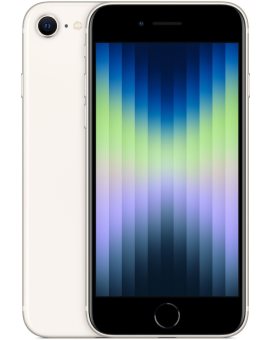
The latest iPhone SE 2022 is an ideal gateway to the world of iOS. Visually it's no different from the previous 2020 model, although Apple has opted for a sturdier glass front and back. The internal hardware, on the other hand, has undergone significant changes. The first and foremost is the integration of the high-end A15 Bionic processor, which can also be found in the top-of-the-line iPhone 13. The processor enables advanced camera options such as Deep Fusion capture and Smart HDR 4.
For people who like their mobile internet fast and stable, the new iPhone SE brings the much coveted 5G support. Considering its price point, the 2022 iPhone SE is undoubtedly a powerful smartphone that beats even more expensive Android phones and it's a worthwhile investment as long as you don't mind its old-fashioned appearance that looks suspiciously similar to iPhone 8 from 2017.
Advantages and disadvantages
- 5G network support
- Powerful A15 Bionic chip
- Advanced camera with many options
- Lower price
- Legacy design
iPhone 12 mini
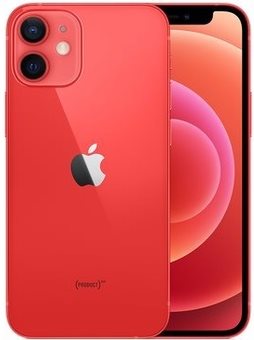
The iPhone 12 mini is a very interesting model introduced in October 2020. Together with its brothers listed below, it is a feature-packed phone with an integrated most powerful 5nm A14 Bionic chip, MagSafe accessory connection system and support for 5G networks. However, it is a compact phone with a diagonal of only 5.4“, which is popular with many of its fans. The display has finally acquired OLED technology even in the cheapest model of the iPhone 12. Its colors are beautifully vivid and black is really black. You can get it in 5 colour variants.
If you don't really need a huge diagonal, but want to try iOS and have the best hardware at your disposal, the iPhone 12 mini is the ideal choice for you.
Advantages and disadvantages
- OLED display
- Compact dimensions
- Performance of the A14 Bionic chip
- Price-performance ratio
- Colour variants
- The package does not include a charger and earphones
iPhone 12
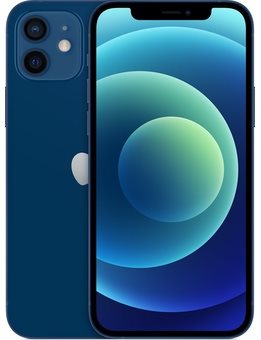
The iPhone 12 from October 2020 is exactly in the middle of Apple's offers. The pleasant square design follows the designs of older iPhones. The phone comes equipped with a 6.1" screen, which, compared to the mini model, provides more space for work and entertainment. It also shares five colour variants with the smallest model.
The iPhone 12 is a perfect choice for everyone who finds the iPhone 12 mini too small. Thanks to the thin frames, even with a 6.1“ display, it is a relatively compact phone that offers a lot.
Advantages and disadvantages
- Still compact dimensions thanks to thin frames
- Dual sensor with ultra-wide angles
- 5G support
- Colour variants
- The package does not include a charger and earphones
- The basic model has only 64GB of storage
iPhone 12 Pro

We have already introduced two basic models of the new iPhone and now it's time to move to the higher category. At first glance, the Pro model differs from the iPhone 12 mainly in its shiny sides, which are made of surgical steel. Five playful colour variants are nowhere to be found, but instead the iPhone 12 is available in four stylish colours. We can also experience improvements in the camera, which boasts a telephoto lens and a LiDAR sensor.
The iPhone 12 Pro shows its focus with a luxurious design that underlines the great equipment. Compared to the previous models, it also offers 6GB of RAM.
Advantages and disadvantages
- Telephoto camera
- LiDAR sensor
- Higher RAM
- Luxury design
- The package does not include a charger and earphones
- The steel sides are prone to fingerprints
iPhone 12 Pro Max

Don't want to think about compromises and want nothing less than the largest display available? Then the iPhone 12 Pro Max is for you. Its display already reaches the size of 6.7“, which makes it a large model. All the features of the Pro model are found here, and in addition to the larger display, the camera has also been improved by using a 5x optical zoom range.
The iPhone 12 Pro Max will please the most demanding users, who won't miss anything with this phone. Of course, the price fully corresponds to the parameters on offer.
Advantages and disadvantages
- Uncompromising 6.7“ OLED display
- LiDAR sensor
- 5x optical zoom range
- Luxury design
- Currently the most advanced iPhone
- The package does not include a charger and earphones
- The steel sides are prone to fingerprints
- Price
iPhone 11
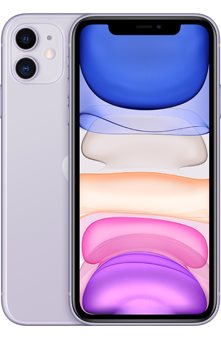
The iPhone 11 is one of the models Apple introduced in September 2019. When compared to its predecessor, the iPhone Xr, we can see a number of improvements. The rear camera now has a partner in crime. For the first time, Apple is using an ultra-wide lens and the camera also supports optical stabilisation and optical zoom. The new Apple A13 processor is currently one of the most powerful in the world. Those interested in getting their hands on one of these beauties will also appreciate the lower price compared to the previous generation.
iPhone 11 seems to be a great entry-level model if you're thinking of investing in Apple. The smartphone is similar to the iPhone Xr while fine-tuning out any bugs.
Advantages and disadvantages
- The display is an acceptable size for most users
- Dual camera with OIS and optical zoom
- The first iPhone with an ultra-wide lens
- Great performance thanks to the A13 processor
- It costs less than last year's equivalent
- Unlike other phones in this series, it doesn't have an XDR display
- No 512GB version
iPhone 11 Pro

Along with the new iPhone 11, Apple announced the 11 Pro series in September 2019. As a standard, it is similar to last year's Xs. But in terms of functions and equipment, this is a clear step forward. For the first time ever, an iPhone has a triple camera with all three lenses offering a 12Mpx resolution. When compared to the basic model, a telephoto lens has been added to help with portrait mode. Like the Xs, the iPhone 11 Pro is slightly smaller than the iPhone 11, which may come in handy. As you would imagine, a smaller phone has a smaller display. However, this year's Pro models do have larger batteries and bring improved XDR technology, which you may know from Apple monitors.
If you're looking for the best of Apple, the iPhone 11 Pro is the obvious choice. The triple camera, enriched with artificial intelligence, is great for taking stacks of impressive shots.
Advantages and disadvantages
- Triple camera with excellent software
- Top-notch performance and design
- Longer battery life
- Same price as for the last year's model
- High-quality OLED display with XDR technology
- Very compact dimensions
- The smallest display in the series
- Not everyone likes the design of the photo module
iPhone 11 Pro Max
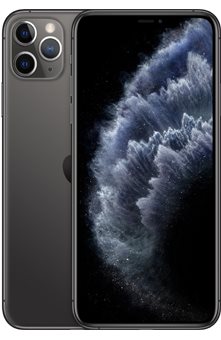
The iPhone 11 Pro Max is the longest model in the 2019 series. The name “Max” suggests that the display is larger than the iPhone 11 Pro and the OLED panel with XDR technology measures in at 6.5". The larger display does mean a larger body, which can make it a little more difficult to operate. Like all 11-series models, the iPhone 11 Pro Max is IP68 certified and is powered by the industry-leading Apple A13 processor for higher performance and more efficient operation.
The iPhone 11 Pro Max is ideal if you like the iPhone 11 Pro but would prefer a larger screen. Be prepared to pay extra for models with higher storage capacity.
Advantages and disadvantages
- Apple's best camera
- Huge Super Retina OLED Display with XDR
- The larger display retains the same softness
- Battery life is noticeably longer
- Impeccable workmanship
- Higher price
- The design may not suit everyone
iPhone SE 2020

The iPhone SE has been an entry model into the iOS ecosystem since 2016 and has proven popular with many users because of its smaller size. The new iPhone SE 2020 is clearly continuing this trend, although it is somewhat larger, following the iPhone 8.
Its iPhone 8 DNA is clearly visible in its dimensions, screen size, display technology, but also the iconic home button. Being newer, however, iPhone SE 2020 is more powerful. It still works with only 3GB of RAM, but its fine-tuned iOS makes it a non-issue in practice.
The phone is powered by the industry-leading Apple A13 Bionic processor (also found on flagships like the iPhone 11 Pro Max), which has still plenty of power to spare. It also outperforms the Snapdragon 865 or the competition from Samsung and Huawei. So if you want a small but powerful phone with that Apple know-how, you can't go wrong with iPhone 2020.
Advantages and disadvantages
- Noticeably smaller than most modern smartphones
- Apple A13 Bionic processor
- Fan-favourite design
- Supports fast charging and other latest technologies
- iPhone for a very good price
- No OLED display
- No Face ID
- Only one camera
iPhone Xr

The iPhone Xr is currently the cheapest of the iPhones introduced in 2018. It is slightly larger and has a larger screen than the iPhone Xs. However, its resolution is one third lower. The fundamental difference lies in the rear camera. While the iPhone Xs and Xs Max operate with two 12Mpx cameras, the iPhone Xr only has one camera. This does not deprive the phone of the much-vaunted portrait mode. It is powered by a high-performance Apple A12 Bionic processor.
The iPhone Xr is suitable for anyone who wants a stylish phone but is limited by budget. If you accept a few compromises, you will be happy with the Xr.
Advantages and disadvantages
- Still perfect performance
- Large display
- Stylish design
- Top design
- Reduced price
- Absence of Touch ID
- “Only” one rear camera
We offer refurbished iPhones
Not interested in a brand new iPhone? Thanks to our cooperation with Renewd, we now offer refurbished iPhones. If you want to save both your wallet and the environment, now you have a great opportunity.
Our Renewd refurbished iPhones offer:
Treat yourself to the iPhone Xs, iPhone 11, iPhone 11 Pro, iPhone SE 2020, or iPhone X. See the full offer in the Refurbished Apple iPhone section.
The best camera is the one you always have with you. And cameras in photo mobiles are getting better and better. Mobiles in the Camera Phone category possess top-quality photo equipment that allow you to capture any snapshot. The results are good enough for family holidays, celebrations, or your own fun photoshoots. Camera phones are ranked alongside smartphones as they come with an installed operating system. This brings all of the benefits of a smartphone, such as the vast selection of apps and games available.
Frequently asked questions when choosing a mobile phone
Is a camera with more megapixels better?
More megapixels does not necessarily mean better photos. The size of the camera sensor is important. Mobile phones usually have a small sensor and more megapixels in a small area can cause more distortion. Subsequent photo editing is often used to delete small details. That's why the best camera phones have 12-15Mpx.
So what parameters should I focus on?
To estimate the quality of your phone's camera, it is a good idea to focus on the aperture and optical image stabilisation. Aperture represents the amount of light that hits the sensor. The lower the number, the more light hits the sensor. This is especially useful when shooting in low light conditions. Optical stabilisation is built directly into the optical lens system and is significantly more efficient than software stabilisation. It reduces shake when shooting handheld so that photos are not blurred. If you want to experiment with depth of field (bokeh), a phone with a dual-camera is required.
Is there a significant difference between smartphones and camera phones?
No, camera phones are just smartphones with a top-quality camera.
Durable phones feature enhanced IP-certified durability and resistance to dust, water, and even falls. They are available in both classic keypad phones and smartphones. If you like to do sports or outdoor activities while browsing the internet and installing any applications, a smartphone is the perfect option for you. On the other hand, when compared to the keypad versions, they have the disadvantage of significantly shorter battery life and a heavier weight.
Water-Resistant Phones
Water-resistant phones have the manufacturer's protection guarantee against water damage. Modern smartphones are often relatively water-resistant with no negative impact on their design.
What is the degree of resistance?
An IP rating, such as IP57, is used to express the resistance. The first digits of the "IP" prefix indicate the dust-resistance or more precisely how dustproof it is, and the range is represented from 1 to 6. The second digit represents water-resistance and is represented by a range from 1 to 8. The most durable phones on the market are IP68 - they are fully dustproof and waterproof. You can safely immerse your phone in water at a given depth for an amount of time specified by the manufacturer. This starts from 1 metre deep for 30 minutes.
Impact-Resistant Phones
Phones that are shock-resistant are among the most durable ones to purchase. They have an increased resistance to mechanical damage and falls from a certain height. They are also water-resistant. These phones usually have several different reinforcements, a rubberised surface and other protective "jags" at their risk points. They are designed for extreme conditions, such as challenging outdoor activities or working in risky environments.
Looking for the most advanced smartphone on the market and don't mind paying extra for uncharted technology? Check out foldable phones. Their specs can match any flagship and the flexible display gives them an eye-catching look that won't get stale for a long time to come. Foldable phones can be opened like a book, a flip phone, rotated and who knows what manufacturers will come up with in the future. But these are definitely not phones for everyone, at least for now. But if you want to stand out from the crowd or simply like to discover new gadgets, you'll like them.
Frequently asked questions when choosing a foldable phone
What's the point of having a foldable display in the first place?
Since flexible phones have not yet fully established themselves in the market, the use of a flexible display varies from model to model. The Motorola Razr, for example, uses a flexible display to mimic the iconic flip phones, allowing it to maintain a modern large display but also a very small size. The Samsung Galaxy Z Fold3 goes about it differently. It has two displays—a classic one that can be used for quick searches, taking calls, etc., and a larger one. The latter is foldable and suitable for watching movies, working efficiently or even browsing social networks.
Are foldable phones still a hassle?
The launch of foldable phones was less than stellar. However, the phones have come quite a long way since the early pioneers, and now they seem to be ready for everyday use with few issues. However, it's still a very young technology and you should keep this in mind if you buy a foldable phone.
Regular keypad phones are reliable in every situation and are ideal if you require a long battery life from your phone. They are primarily intended for making calls and writing messages, which are to do thanks to the physical keypad. They can also have integrated cameras, yet of a significantly lower quality than those seen on smartphones. Due to their low cost and long service life, they can make ideal back-up or travel phones.
Frequently asked questions when choosing a classic (push-button) phone
Does it make sense to buy a keypad phone nowadays?
It is true that now mainly smartphones are sold, but even push-button phones still have their fans. The keypad design suits many people who do not wish to use a smartphone. Another advantage is their simple control and low cost. Manufacturers remember this and they still present new models, even though their offer is not as extensive as that of smartphones.
Can I take pictures with a button phone?
The built-in camera is standard on push-button phones as well. However, its quality cannot be compared with compact cameras or smartphones.
Phones for seniors form a separate category. Their manufacturers focus on practicality and simplicity. They also offer features, such as the Call for Help button, that can save lives. They have large keys and a font that can be easily read without glasses.
Frequently asked questions when choosing a mobile phone for seniors
What is the SOS button and how does it work?
The SOS button is used in an emergency and can be assigned to one or more contacts, such as family members. After it is pressed, the phone usually sends an SMS message to the contacts, or even calls the defined contact, for example, the emergency number.
How to choose a phone for seniors and what functions should I look for?
Even the cheapest models, starting at 500 CZK, offer large buttons, a contrasting, easy-to-read display and a few extra features. Phones with SOS buttons range from 700 CZK. Clamshell mobile phones, starting at the same price, are also available. More expensive models have a larger display, support Bluetooth support or feature a more attractive design.
For some mobile phones, the manufacturer also provides a handy charging stand. This saves the user from connecting a charging connector to their phone.
The SOS Locator feature, which some Aligator phones have, can also be very useful. When the SOS button is pressed, the phone sends a link with a map pinpointing the user's current location along with an emergency message.
What do mobile phones for seniors usually include?
Phones for seniors usually have only basic features, however, practically all models nowadays include:
- Camera – due to the lower resolution - around 0.3 Mpx, however, this is only a basic and emergency solution
- Menu and controls in the language the senior speaks - when buying a phone, look in the menu for this information
- Fast dial – it allows you to assign a given phone number to a specific button, so the user does not have to type it in or look for it in the contacts to dial it
- Alarm clock – it is a common part of all phones, the option to set an alarm clock or notifications for different kinds of situations
Are spare batteries available?
It's usually not common. However, the life of mobile batteries is usually longer than the life of the phones themselves. If you need a spare battery, we will refer you to our Mobile phone batteries section, or you can contact an authorised service of your phone's manufacturer.
If you are looking for an office phone, or simply prefer the good old landline, you might be interested in desktop phones and fax machines. However, even the original phones boast a modern touch, so in addition to the classic dial, they often feature a smaller or larger display. Multiple SIP accounts are also common, for example up to 16.
Glossary - Mobile Phones
LTE
Indicates 4th generation data network. The maximum theoretical LTE-A (LTE Advanced) data transfer rates are currently up to 375Mb/sec for downloading and up to 50Mb/sec for uploading. Most Czech LTE networks are built unlike the foreign LTE networks at 800MHz, so when choosing a phone, make sure that it also supports this frequency.
Notch
Notch is the name for the screen cutout used on mobile phones. It is designed to allow the screen to occupy as much as possible the area of the smartphone, but also to keep the sensors and selfie camera ergonomically positioned.
Pure Android
Pure Android is the name used for the Android operating system in its simplest form - it does not include a customised graphical interface or any functionality that individual manufacturers insert into the operating system.
Degree of protection (IP)
Ingress Protection (IP) is an internationally standardised code that indicates the immunity of electrical appliances to foreign bodies and liquids, especially water. It is expressed in the form of the characters "IP" followed by two digits: the first indicates protection against dangerous contact and foreign objects, the second indicates the degree of protection against the ingress of water.
eSIM
Plastic SIM cards are already being rung a death knell. ESIM is the future. This is a separate chip built into the motherboard of the phone. What will change from moving away from plastic cards? And does modern eSIM have any pitfalls?












